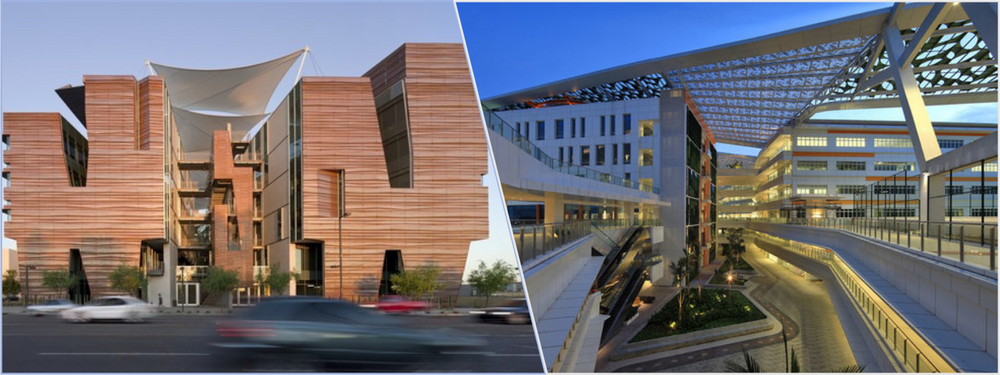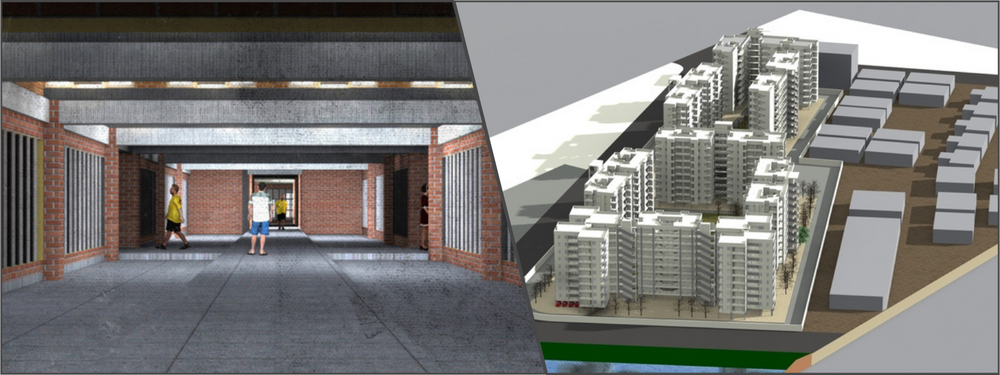Technology has made remarkable strides, transforming how we work and live. The continuous evolution and enhancement of computer-aided design (CAD) technology have significantly impacted the design and engineering field.
Given this technology’s benefits and capabilities, it is no surprise that many professionals are moving away from manual drafting in favor of CAD for their design and drafting projects, including freelance drafting services for 2D and 3D CAD design. Drafting services are vital in accurately executing design and architectural projects in the construction industry, and CAD has proven to be a superior tool to manual drafting methods.
CAD has become a vital communication tool in the architecture, engineering, and construction (AEC) industry, replacing labor-intensive and time-consuming traditional manual drafting. CAD drafting services have transformed the design and engineering landscape, offering enhanced precision and clarity compared to manual methods. In today’s competitive environment, clear communication among stakeholders is crucial. CAD drafting helps businesses streamline design processes, minimize errors, and achieve successful project outcomes by ensuring everyone understands their roles and responsibilities.
As you continue reading below, you’ll discover why your business should use CAD services —transitioning from traditional drafting methods to CAD offers many advantages, such as enhanced accuracy, efficiency, and overall project success. Explore the compelling reasons for embracing CAD technology and learn how it can transform how your business approaches drafting and design.
 Table of Contents
Table of Contents
- What distinguishes manual drafting from CAD?
- CAD enhances efficiency and expedites the drafting process
- CAD provides convenient storage and enhanced accessibility
- CAD is compatible with different 3D modeling services
- CAD design contributes to environmental sustainability
- CAD simplifies revisions
- CAD offers an adaptable modification process
- CAD drafting delivers superior accuracy and precision
- CAD comes with databases and templates you can use anytime
- CAD allows the use of 3D illustration for virtual structure representation
- The bottom line
- How Cad Crowd can help
RELATED: What are AutoCAD designer rates, drafting costs & services company pricing?
What distinguishes manual drafting from CAD?
Manual drafting is a traditional method that uses markers, pens, pencils, or polyester film to create a design by hand. In contrast, CAD uses technology to develop designs with incredible speed and precision, enabling seamless and endless iteration. Freelance 3D CAD design & 2D drafting services, enable companies to use designers that can easily modify a design without redrawing the entire design from scratch, streamlining the design process and enhancing overall efficiency. This ease of modification is one of the reasons CAD brought about a transformative paradigm shift in the product development industry, revolutionizing how designs are created and refined.
CAD enhances efficiency and expedites the drafting process
One of the primary goals of technological advancements is to simplify tasks, save time, and increase productivity. CAD technology exemplifies this by offering a drafting process that is significantly faster than traditional manual drafting methods. CAD streamlines the preparation of reports, scaling, bill generation, and other content.
Additionally, 3D CAD translation services allow seamless conversion between different CAD file formats, enhancing interoperability and collaboration. Tasks that previously required painstakingly drawing each line by hand can now be accomplished with just a few clicks of the mouse.
CAD software also minimizes the need for repeated iterations, further saving valuable time. The data describing a CAD component is associative, which means that any revisions made to the component are automatically reflected in all instances where the data has been used, ensuring consistent and accurate updates throughout the design.
RELATED: How much do CAD drawing services cost for design drafting & architectural blueprints?

CAD provides convenient storage and enhanced accessibility
One of the advantages of CAD is the ease of file storage and accessibility and the ability to utilize 2D-to-3D conversion services to convert 2D drawings into 3D models. Unlike manual drafts, which require physical filing and organization in cabinets, CAD files can be securely stored on a computer server or cloud-based platform.
This digital storage allows you to access your drafts from any location, anytime, and seamlessly resume your work where you last left off, provided you have a stable internet connection. Additionally, CAD drafting is a more environmentally friendly approach to design creation, as it reduces paper usage.
In contrast, manual drafting carries inherent risks, such as the potential for damage or loss of essential documents. With CAD, these risks are mitigated, and your designs remain safely stored and readily accessible.
RELATED: CAD file conversion costs, file type conversion rates & services pricing
CAD is compatible with different 3D modeling services
In traditional manual drafting, once the initial stages of a project are completed, the drawings often serve a limited purpose, primarily for reference or documentation in end-of-month or annual reports. In contrast, 2D CAD drafting services offer far greater versatility and utility.
CAD files can seamlessly transition into more advanced stages of construction and manufacturing, serving as the foundation for further development. By integrating with various 3D modeling services, CAD enables the realization and execution of complex and progressive construction projects, unlocking new possibilities and enhancing overall project outcomes.
CAD design contributes to environmental sustainability
While it may seem minor, opting for paperless design methods such as CAD is a meaningful way to contribute to environmental sustainability. CAD digitalization services allow businesses to transform traditional paper-based designs into digital CAD models, further enhancing efficiency and sustainability.
As consumers increasingly prioritize working with businesses emphasizing eco-friendly practices, CAD aligns with ecological goals and customer preferences. By utilizing CAD services, you reduce the demand for paper and the need for tree-cutting associated with traditional drafting.
Furthermore, even though computers require power to operate, you can mitigate the environmental impact of computer use by incorporating renewable energy sources, such as solar panels, to generate sustainable power for your business. In this way, CAD design services become part of a holistic approach to promoting sustainability in your operations.
RELATED: Why you should outsource to CAD drawing and drafting services

CAD simplifies revisions
Whether working with traditional paper drafts or digital software, revisions are inevitable in the design process. Manual drafting involves erasing and redrawing sections, leading to time-consuming revisions and increased errors.
CAD streamlines the revision process with editing tools and CAD data translation services, allowing seamless data conversion between different CAD software formats. Designers can quickly adjust their work using CAD, efficiently performing actions like deleting, redoing, or undoing changes. Advanced editing tools reduce repetitive drawing and simplify modifications.
With CAD, designers can easily modify elements such as scaling, rotating, moving, and mirroring without starting from scratch. This enhances accuracy and productivity during the design and revision stages, enabling designers to make precise adjustments efficiently. Using CAD minimizes frustration, reduces errors, and allows designers to focus on creativity and innovation.
CAD offers an adaptable modification process
In traditional drafting, making additions, removals, or modifications to drawings often requires substantial effort, and extensive revisions may require redoing the entire drawing. In contrast, CAD services, including CAD drawing standardization services, offer a more adaptable and efficient approach to making design changes while maintaining clean and organized drawings. These services help ensure that all CAD drawings adhere to industry-specific standards, enhancing project consistency.
With access to high-end CAD software toolsets with a wide range of functionalities, design professionals can quickly and effortlessly implement the necessary adjustments to CAD drawings. For example, CAD services allow for modifying specific settings and overlays independently without impacting the approved portions of the design. This level of precision and flexibility ensures that designers can readily adapt their work to evolving requirements while preserving the integrity of their drafts.
CAD drafting delivers superior accuracy and precision
CAD drafting is a complex field that demands strict adherence to rules and standards to generate accurate drawings. Precise calculations and measurements are crucial for orientation, symbols, datum points, arc curvature, slope, and depth. Drafting accuracy is vital, as it directly impacts construction or manufacturing processes.
Manual drafting is prone to human errors that may lead to inaccuracies. CAD drafting software addresses these issues with automated functions and precision tools, streamlining the drafting process and improving accuracy. CAD allows designers to produce cleaner drafts by quickly correcting errors without leaving traces, which can be difficult with manual methods.
Design professionals can create high-quality and accurate drafts through CAD drawing services by harnessing CAD’s precision, automated calculations, and seamless adjustments. Consequently, CAD provides a reliable, efficient drafting approach, ensuring designs are executed excellently and precisely.
RELATED: What are prices of CAD and drafting from freelancers?
CAD comes with databases and templates you can use anytime
In traditional hand drafting, every new project requires starting from scratch. Even when the drafting technician has a reference to guide the assignment, building the design from the ground up is still necessary. This approach can be particularly time-consuming for more complex designs.
In contrast, AutoCAD drafting and design services can create templates with foundational details that can be reused across multiple projects. By accessing a database of pre-made draft templates, drafting technicians can accelerate the initiation of future projects. This streamlined approach significantly enhances the efficiency of the drafting process, saving valuable time and effort.

CAD allows the use of 3D illustration for virtual structure representation
3D illustrations are vital in visualizing structures for contractors, architects, and engineers. While it is possible to create 3D structures manually, the process is time-intensive and may not yield results as precise as those achieved through modern CAD software. Utilizing CAD software for 3D structure design results in more realistic and accurate visualizations, enhancing the overall quality of the representation.
It’s important to note that offering 3D animation services, walkthroughs, architectural 3D modeling services, and other visualizations requires drafters with specialized skills and proficiency in the latest CAD software. To optimize cost-efficiency and ensure high-quality outcomes, consider outsourcing your CAD drafting needs to a reputable provider of visualization services. By doing so, you can leverage the expertise of skilled professionals and access advanced software without incurring the costs of purchasing new software or hiring additional in-house staff.
The bottom line
In today’s design and engineering landscape, CAD technology has revolutionized how professionals approach drafting projects. CAD has become an indispensable tool in the AEC industry, offering superior accuracy, speed, and flexibility compared to traditional manual drafting methods. CAD enables designers to create precise, clean, and easily adjustable designs, streamlines the revision process, and allows for the creation of reusable templates and databases. Additionally, CAD facilitates the production of realistic 3D animations and 3D modeling design services, fostering enhanced visualization and communication.
CAD also contributes to environmental sustainability by reducing paper usage and providing digital storage options. Given these advantages, businesses in the AEC industry stand to benefit significantly by adopting CAD services for their drafting and design needs. Using CAD promotes creativity, efficiency, and precision, ultimately leading to successful project outcomes and higher confidence in design work.
RELATED: How much blueprints cost for CAD floor plans, and 2D drawings rates at drafting firms?
How Cad Crowd can help
Elevate your design capabilities by utilizing CAD services through Cad Crowd. As a leading platform for CAD solutions, Cad Crowd connects businesses to a global network of skilled freelance CAD designers and professionals ready to provide on-demand expertise for projects requiring architectural drafting, product design, and 3D modeling services. Our CAD services offer the advantage of precision, efficiency, and adaptability, enabling you to make fast revisions and achieve accurate designs. Experience the convenience of streamlined design workflows, rapid prototyping, and enhanced collaboration with our CAD design experts.
Take the next step by getting a free quote for your project today.
